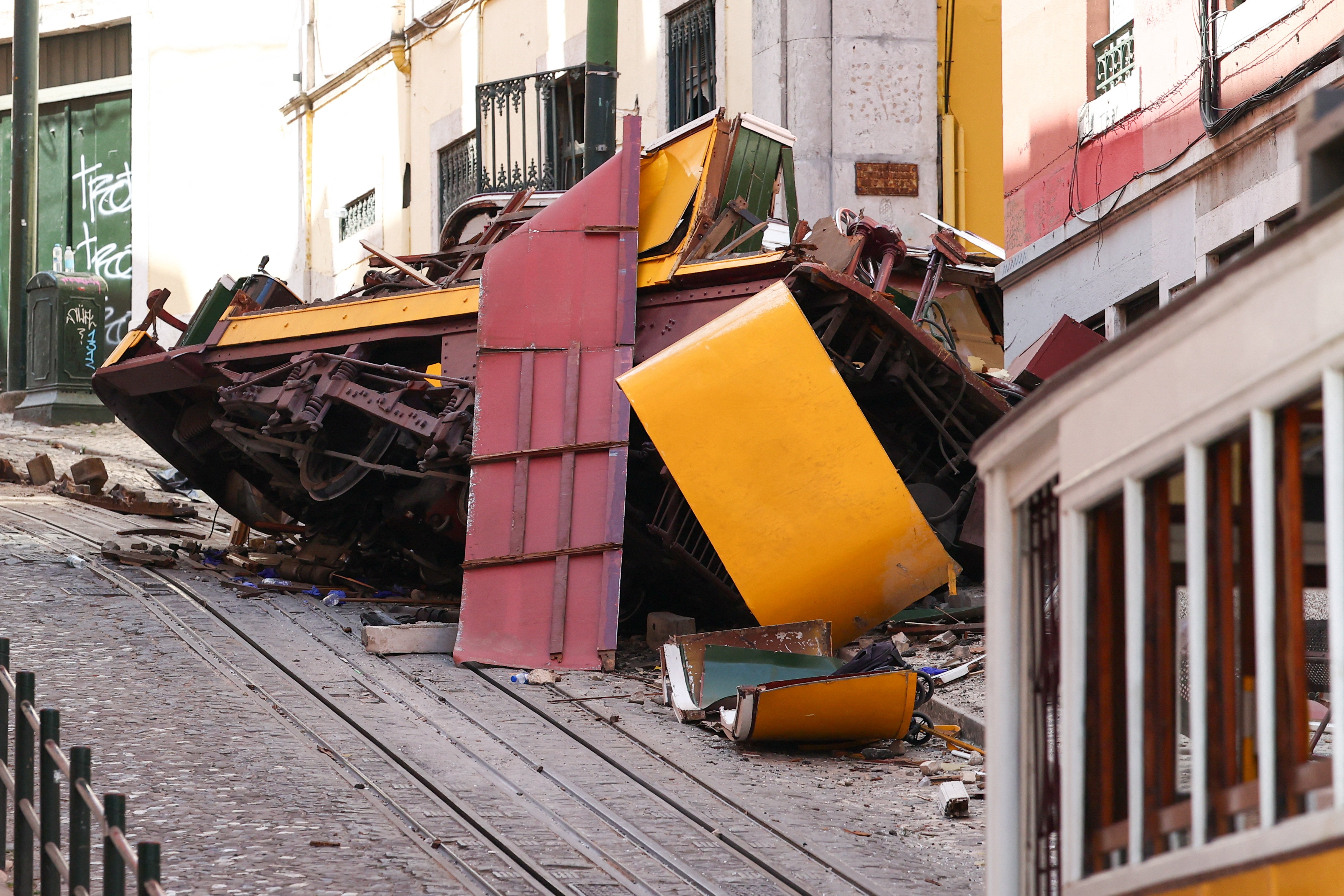At least 16 people have died and 21 left injured after a funicular derailed and hit a building in Lisbon on Wednesday.
The tram-like Gloria funicular railway, which crashed just after 6pm, has been called “one of the biggest tragedies” in the country’s history by Prime Minister Luis Montenegro, who declared a day of national mourning on Thursday.
The only victim whose identity has been revealed is André Jorge Gonçalves Marques, a brake guard who worked on the funicular.
A three-year-old child is among the injured, while seven people are in a serious condition. The crash is thought to have involved at least 38 people from 10 nationalities, according to the head of Lisbon's Civil Protection Agency.
So far, it is believed the foreign nationals involved are from Germany, Spain, South Korea, Cape Verde, Canada, Italy, France, Switzerland and Morocco.
Initial reports from local media suggest that one of the cable cars came loose from its cable and struck the pavement, followed by the second cart, which derailed and collided with a building.
The yellow-and-white Elevador da Glória, which opened in 1885, is a beloved tourist attraction in Lisbon that has carried more than 3 million passengers up and down some of the steepest streets in the capital every year.
The funicular crashed into a building near Avenida da Liberdade, a boulevard in Lisbon, Portugal’s capital. Lisbon mayor Carlos Moedas told reporters at the scene that the city was distraught over the incident.
“This was a tragic accident … It’s a tragedy of the like we’ve never seen.”
The railway line is in the civil parish of Santo António. It connects Lisbon’s Pombaline downtown area near the Restauradores Square with the Bairro Alto (Upper Quarter), known for its vibrant nightlife.

The tram journey takes three minutes on a 275m route, going through a street art gallery, seen on the Bairro Alto side. It’s intended to take you up to the upper neighbourhood without having to climb some of the steepest hills in Lisbon.
The crash took place next to Miradouro de São Pedro de Alcântara, one of Lisbon’s most iconic scenic points. The city has declared that it will have three days of mourning from Thursday.
The area of the crash, Santo António, is a popular tourist area known for several landmarks, including the Marquis of Pombal Square, Avenida da Liberdade, and Restauradores Square, and for its high-end shopping and Michelin-starred restaurants.
The Prime Minister of Portugal, Luis Montenegro, says the prompt arrival of emergency services at the scene of the crash prevented more deaths. “This could have been a much bigger tragedy,” he says.
Both Portugal's public prosecutor's office and public transport company Carris have launched investigations into the causes of the crash, national news agency Lusa reports.
"As is customary in these types of situations and as required by law," the attorney general's office said.
Lisbon funicular crash latest: 16 dead in ‘one of Portugal’s biggest tragedies’
How Lisbon, the city of light, is coping with its darkest day after tragic crash
‘There’s kids under there’: How Lisbon funicular crash that left 16 dead unfolded
Lisbon man escapes funicular crash after saying, ‘We’re all going to die’
These Ukrainians refused to leave their homes. Now they have no choice
Ukraine war latest: Trump holding call with Zelensky after fresh warning to Putin







